The Man Who Killed Hitler and Then The Bigfoot Blu-ray Movie
HomeThe Man Who Killed Hitler and Then The Bigfoot Blu-ray Movie 
RLJ Entertainment | 2018 | 98 min | Not rated | Apr 02, 2019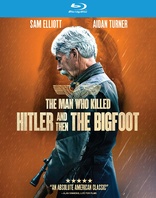
Movie rating
6.6 | / 10 |
Blu-ray rating
| Users | 4.5 | |
| Reviewer | 3.0 | |
| Overall | 3.5 |
Overview
The Man Who Killed Hitler and Then The Bigfoot (2018)
A legendary American war veteran is recruited to hunt a mythical creature.
Starring: Sam Elliott, Aidan Turner, Ron Livingston, Sean Bridgers, Caitlin FitzGeraldDirector: Robert D. Krzykowski
| Drama | Uncertain |
| Adventure | Uncertain |
Specifications
Video
Video codec: MPEG-4 AVC
Video resolution: 1080p
Aspect ratio: 2.40:1
Original aspect ratio: 2.39:1
Audio
English: DTS-HD Master Audio 5.1
Subtitles
English SDH, French, Spanish
Discs
Blu-ray Disc
Single disc (1 BD)
Packaging
Slipcover in original pressing
Playback
Region A (locked)
Review
Rating summary
| Movie | 3.0 | |
| Video | 4.5 | |
| Audio | 4.5 | |
| Extras | 4.0 | |
| Overall | 3.0 |
The Man Who Killed Hitler and Then The Bigfoot Blu-ray Movie Review
No clever sub-title needed.
Reviewed by Randy Miller III March 20, 2019What a title, right? Robert D. Krzykowski's The Man Who Killed Hitler and Then The Bigfoot (2018) lives and dies by that title...and if the first-time writer/director's career doesn't take off, he might just regret keeping it. It's a lofty name with dizzying potential and, like Scooby-Doo Meets the Harlem Globetrotters and Operation Dumbo Drop, it technically makes good on those promises at some point during its 98-minute running time. But just barely, and one of the entirely justified killings is a lot more compelling than the other. Yet despite a few painfully obvious flaws, The Man Who Killed Hitler and Then The Bigfoot has a lot going for it: aside from the charismatic draw of Sam Elliott as a grizzled war veteran and clever VFX that defy the film's small budget, its unexpectedly poignant themes about sacrifice, regret, and morality elevate what might have otherwise been a lightweight and entirely forgettable production.
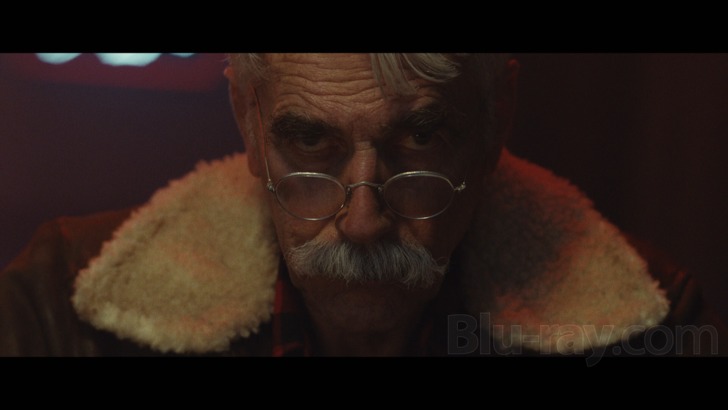
Do we really need a synopsis for this one? Absolutely, and with the disclaimer that spoilers are ahead: retired WWII veteran Calvin Barr (Elliott) maintains a solitary small-town life with his faithful golden retriever, Ralph. His military medals and uniform mean little to him, because Calvin regrets killing one man during his service...even though he had it coming. Of course, his top-secret mission that resulted in Adolf Hitler's death was never "on the record", so Calvin's heroic efforts are hidden from his friends and neighbors; as far as they're concerned, he simply lived through a war. Since then, he lost touch with his sweetheart Maxine (Caitlin Fitzgerald) and drifted away from his brother Ed (Larry Miller), with the only remaining ties to his past being a few trinkets, an unopened box, and his aging face in the mirror. Calvin's lonely but peaceful life is interrupted one evening by two government representatives (Ron Livingston and Rizwan Manji), respectively from America and Canada, who inform him that the world faces a biological threat. It's The Bigfoot, who has already infected a large amount of wildlife in the Canadian wilderness, and only a tiny portion of the population is immune to the disease he's spreading. Calvin's one of them and, given his past military exploits, has clearly become their top choice. Reluctant to kill again, he nonetheless accepts his new mission.
All of this sounds refreshingly original, with its interesting combination of an aging hero, secret U.S. history, and a seemingly wild plot that rarely goes where we've been almost trained to predict. Frequent flashbacks to the 1940s, with Aidan Turner as Calvin's younger self, are pulled off with an artful precision that flow more smoothly than "Forty years ago". The superb practical and visual effects -- aside from the third-act Bigfoot suit, which looks ridiculous -- make the film feel a lot more expensive than it was: WWI-era Germany is the standout, with matte paintings by the esteemed Rocco Gioffre and even a convincing plane fly-over done on the cheap by celebrated VFX wizard Douglas Trumbull (incidentally, both also serve as producers). The performances are mostly good to great: Sam Elliott's lead performance holds much of the film together and, had his long career not already been recharged in recent years -- not that it ever really stalled -- this might feel like a Quentin Tarantino-type attempt to put him back in the spotlight.
So with all of these positive elements, why doesn't The Man Who Killed Hitler and Then The Bigfoot work as a whole? Taking aside its click-bait title, the film's entire third act Bigfoot hunt marks a huge step down in quality, as the otherwise interesting combo of character study and intriguing flashbacks devolves into an awkward left-field hunt that wraps up with a painfully drawn-out epilogue. That, and the film takes way too many cues from other well-known films and directors (Tarantino, Wes Anderson, Guy Ritchie, and even Edgar Wright) for its own good, which include clear style swipes that extend far beyond visual flourishes and plot elements. These wouldn't be as problematic if The Man Who Killed Hitler and Then The Bigfoot hadn't been in development for over a dozen years, as writer/director Robert D. Krzykowski claims in a behind-the-scenes interview: this puts it at least two full years in front of Inglourious Basterds, and I'm guessing that he felt it necessary to shoehorn in all that extra Bigfoot material to compensate. Unfortunately, that ends up being the least interesting and successful part of this film by a country mile.
Nonetheless, The Man Who Killed Hitler and Then The Bigfoot has clear merit for is interesting and unpredictable path to
somewhere, even though it feels like some of it is being made up on the spot. It's at least worth a once-over for its fine performances,
clever low-budget "cheats", and the soundtrack is great too. But it's hard not to feel disappointed at some point during this film, and doubly so
when it's in the home stretch. Nonetheless, those who end up enjoying The Man Who Killed Hitler and Then The Bigfoot -- or even if
you're still on the fence, like me -- should appreciate the care that went into RLJ Entertainment's Blu-ray package, which includes an impressive
A/V presentation and a well-rounded collection of bonus features that outshine typical EPK featurettes and other promotional fluff.
The Man Who Killed Hitler and Then The Bigfoot Blu-ray Movie, Video Quality 
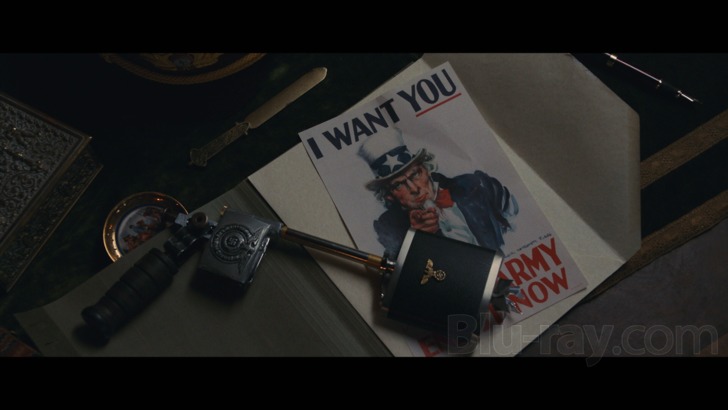
Presented in its approximate original 2.40:1 aspect ratio, The Man Who Killed Hitler and Then The Bigfoot looks very good on RLJ Entertainment's Blu-ray. Technical information regarding the film's source material was impossible to pin down and not covered in detail during the extras, but it appears to have been shot digitally and, due to the existence of a 4K version (see below), was likely shot at 2K or possibly 2.8K resolution and directly transferred or scaled down for Blu-ray. Either way, this 1080p transfer is outstanding from start to finish. At least two different eras are represented during the film and both look excellent with good color saturation, strong image detail and textures -- especially on period costumes, close-ups, and wide shot background details -- as well as solid black levels that show no obvious signs of crush or banding. Nor does this Blu-ray exhibit other problems such as compression artifacts, excessive noise reduction (aside from a few outdoor scenes later in the film, which have a slight waxy sheen), or other noticeable processing. Simply put, this is a great looking disc that, for most, will be the first time seeing it -- the film premiered at Montreal's Fantasia Film Festival in July 2018 and earned a very limited theatrical release after that.
Please note that RLJ Entertainment originally announced a 4K UHD edition of The Man Who Killed Hitler and Then The Bigfoot several months ago, but that option was cancelled soon after pre-orders began. As of this writing, a Region B 4K/BR Mediabook edition can be imported from Germany, and domestically it's available in 4K on iTunes.
The Man Who Killed Hitler and Then The Bigfoot Blu-ray Movie, Audio Quality 
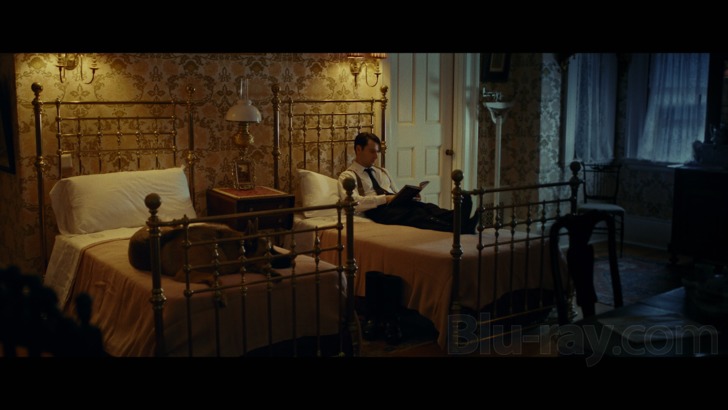
The default DTS-HD 5.1 Master Audio track is also impressive; it gives a lot of dynamic support to Joe Kraemer's original score, as well as the memorable soundtrack cuts including Billy Squire's "Lonely Is the Night" and The Vince Guaraldi Trio's "Cast Your Fate to the Wind". Of course, music isn't the only beneficiary here: the WWII-era scenes feature occasional background action, airplane flyovers, and distant bombs, while the modern-day sequences offer occasional background ambiance in and around Calvin's small hometown. Somewhere in the middle is the film's third act Bigfoot hunt, which sounds a bit more wide-open with subtle panning effects and other moments of channel separation. Dialogue is cleanly recorded with no notable sync issues, while LFE is quite ample during certain scenes mentioned above without feeling overcooked. Like the visuals, this audio presentation defies The Man Who Killed Hitler and Then The Bigfoot's independent roots and makes it feel quite a bit bigger than it actually is. For obvious reasons, I can't see anyone finding much at all to complain about regarding the A/V presentation as a whole.
Optional English (SDH), Spanish, and French subtitles are included during the main feature only -- not the extras, which is disappointing. The former are helpful in identifying song titles, but all three options are somewhat small in comparison to most subtitle fonts I've seen. Nonetheless, they're perfectly legible and placed within the 2.40:1 frame -- perhaps a few pixels too close to the edge, but only those with projectors might find that to be a problem.
The Man Who Killed Hitler and Then The Bigfoot Blu-ray Movie, Special Features and Extras 
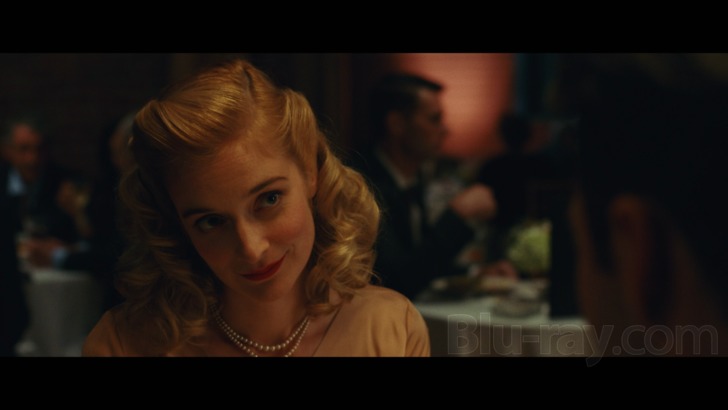
Another impressive effort here, as RLJ Entertainment serves up a surprisingly well-rounded collection of extras.
- Audio Commentary with Writer/Director Robert D. Krzykowski - This scene-specific commentary serves up a lot of details and trivia with very few lapses into silence. Topics of discussion include shooting locations, props, special effects, shout-outs and notable cameos, his favorite films and other influences, developing both time periods, working with an untrained dog, choosing the soundtrack, scene transitions, the editing process, shooting in Turner Falls, removing a stalker with visual effects, working on a tight budget, fighting in a Bigfoot costume, making vomit out of pea soup and orange juice, fishing with Larry Miller, and more. This is a solid track, if not a bit too private and insulated ("there's my brother's car", etc.). Krzykowski's audio often seems to run a few seconds ahead of what's on-screen, but this only leads to a few stray moments of confusion.
- The Making of "The Man Who Killed Hitler and Then The Bigfoot" (39:14, 1080p) is a very in-depth featurette that includes comments from most of the lead and supporting actors (Sam Elliott, Ron Livingston, Caitlin Fitzgerald, etc.), writer/director Robert D. Krzykowski, producers Patrick Ewald and Lucky McKee, special effects artist Rocco Gioffre (!), and executive producer Doug Trumbull (!!). Among other topics, this piece covers the film's 12-year development, casting, production, characters, the director's short film Elsie Hooper (also included as a bonus feature), old-school special effects, editing, and the storyboard process.
- Interview with Composer Joe Kraemer (6:23, 1080p) is a brief sit-down chat that discusses his first meeting with the director when he scored Elsie Hooper, building on the temp track, his specific approach to scoring, nods to his favorite composers, representing two different time periods, and more.
- Deleted Scenes (8:52, 1080p) amounts to a half-dozen cut and/or extended segments, many of which have brief bookends to imply where they were originally placed in the film. No real earth-shattering revelations here, just a few additional bits and pieces of dialogue and other small moments. Some of these feature raw video and sound or missing visual effects but, generally speaking, are in pretty good condition.
- "Elsie Hooper" (5:46, 1080p / DTS-HD 2.0) is writer/director Robert D. Krzykowski 2016 short film mentioned during the making-of featurette and is presented here in its to-be-continued "entirety". Shot in stylish black-and-white 2.55:1 and starring a creepy-looking puppet named Ridley who's looking for his kidnapped sister, the Sin City-esque Elsie Hooper is an inventive production that rightfully earned the attention of several contributors who would later work with Krzykowski on The Man Who Killed Hitler and Then The Bigfoot.
- Conceptual Art Gallery (1080p) features two dozen storyboards and early concept drawings from the film.
The Man Who Killed Hitler and Then The Bigfoot Blu-ray Movie, Overall Score and Recommendation 
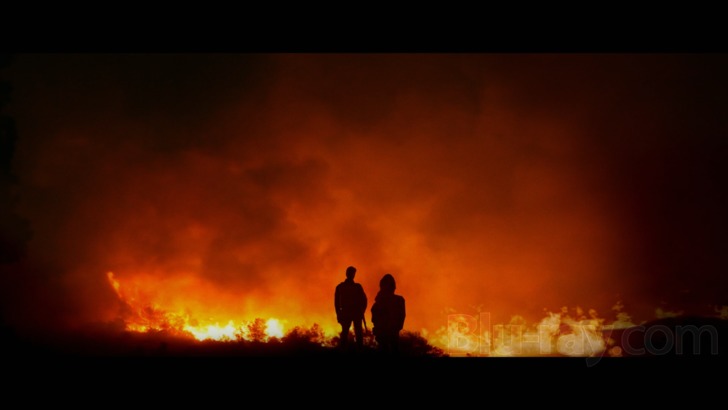
Writer (and first-time director) Robert D. Krzykowski's The Man Who Killed Hitler and Then The Bigfoot has a lot going for it on paper: an
attention-grabbing title and premise, fine performances by Sam Elliott and the supporting cast, and a strong sense of style that extends to the
cinematography, editing, and soundtrack. It sounds like an easy slam-dunk...but it really isn't, because the film wears out its welcome soon after the
halfway mark and struggles to make any kind of point by the time the credits roll. It's odd for almost no particular reason, but perhaps the best
description here is "trying too hard". That's not to say the film isn't without a few genuinely great moments, but they fade with the disappointment of
what comes after them. Ironically, though, RLJ Entertainment's Blu-ray package succeeds by also trying too hard: it's got a surprisingly great
A/V presentation and a well-rounded collection of bonus features...and though none of them profoundly changed my opinion of the film, this makes the
Blu-ray very appealing as a blind buy. But even if this sounds like your cup of tea mug of beer, I'd still proceed with caution.
Other editions
The Man Who Killed Hitler and Then the Bigfoot: Other Editions
Similar titles
Similar titles you might also like

Antibirth
2016

Patient Zero
2018

VFW 4K
2019

Hatchet III
2013

Cold Skin
2017

The Cured
2017

Lost Soul: The Doomed Journey of Richard Stanley's Island of Dr. Moreau
House of Pain Edition
2014

The Blob 4K
1988

Rabid
2019

Pyewacket
2018

Deathgasm
2015

Diary of the Dead
2007

The Wretched
2019

REC 4: Apocalypse
[•REC]⁴: Apocalypse / [•REC]⁴: Apocalipsis
2014

Blood Fest
2018

Puppet Master: The Littlest Reich
2018

Isle of the Dead
Warner Archive Collection
1945

Bite
2015

We Are Still Here
2015

Cabin Fever: Patient Zero
2014
